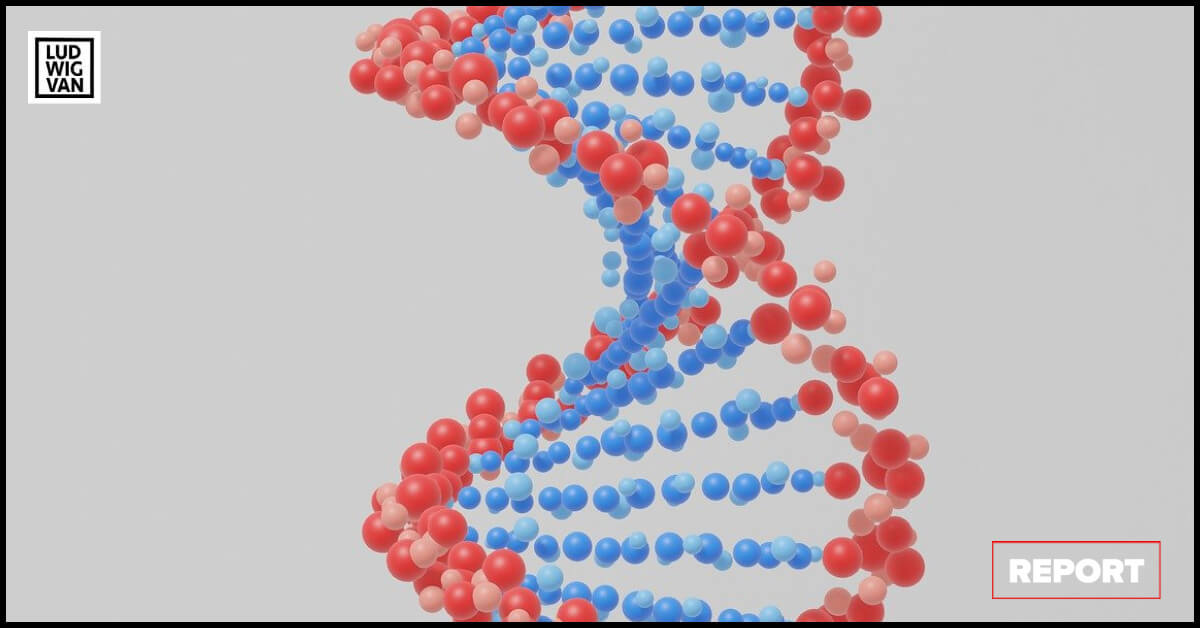
What’s the connection between protein and music? For most people, it might amount to a discussion of the ideal pre-concert meal.
Researchers in Singapore, however, wanted to look into the phenomenon called protein music, DNA music or genetic music. In essence, the compositional technique converts protein sequences (or genes) into notes of music.
However, protein music could stand some improvement in terms of quality, the researchers felt.
Their paper, titled “Protein music of enhanced musicality by music style guided exploration of diverse amino acid properties”, was published in Heliyon journal in September 2021.
Wait, what in the world is protein music?
While not widely known, it’s not a new theory, as it turns out. The first paper on the theory was published in 1996. The technique was further developed by French physicist, mathematician, and composer Joel Sternheimer.
While studying plants, Sternheimer claimed to have discovered the connection between the vibrations of music and the quantum vibrations of molecular particles.
According to an article in New Scientist in 1994, “Sternheimer claims that when plants ‘hear’ the appropriate tune, they produce more of that protein. He also writes tunes that inhibit the synthesis of proteins.”
While it’s not entirely acknowledged by the scientific community, Sternheimer theories are used by a company called genodiscs, which claims to treat various tree viruses through targeted protein music.
Others have studied and theorized about the profound connections between music and our physical world, including similarities in form and function, for decades.
In his 1980 book Godel, Escher, Bach: An Eternal Golden Braid, noted scholar Douglas R. Hofstadter writes (p. 525):
“Music is not a mere linear sequence of notes. Our minds perceive pieces of music on a level far higher than that. We chunk notes into phrases, phrases into melodies, melodies into movements, and movements into full pieces. Similarly, proteins only make sense when they act as chunked units. Although a primary structure carries all the information for the tertiary structure to be created, it still ‘feels’ like less, for its potential is only realized when the tertiary structure is actually physically created.”
Making better protein music
“Despite the continuous development of protein-to-music algorithms, the musicality of protein music lags far behind human music,” the Singapore researchers note in their introduction.
The proposed solution involves making the selection of protein-to-music mapping more specific. Using the Fantasy-Impromptu, a style typical of solo piano compositions of the Romantic period as a reference, the researchers tried to fine tune the process. It’s a form characterized by its emotional appeal, chromaticism, and a wide range on the keyboard. The study names Chopin’s Fantaisie-Impromptu in C-sharp minor in particular.
- They identified 104 different amino acid properties, patterns, and variations on them;
- They developed enhanced algorithms based on a broader inclusion of properties;
- The results were applied to 18 different proteins.
It was the first time the technique had been studied vis-à-vis a specific style of music.
The protein folding patterns became short musical themes or phrases, and the qualities mapped to specific instruments and features. Note values were varied, and harmony was introduced into protein music for the first time.
Final words
The results were, predictably, enhanced musicality. But, it doesn’t look like amino acids will take over composing duties from fully formed human beings anytime soon.
The research is used to determine the types of various proteins, and even to design them.
More importantly , the knowledge also pushes farther into the realm where music itself was born — in the human body.
In this 2019 video from MIT Civil and Environmental Engineering, McAfee Professor of Engineering and Department Head of CEE Markus J. Buehler, MIT postdoc Chi Hua Yu, and a team of researchers from MIT demonstrate their system of creating protein music.
#LUDWIGVAN
Get the daily arts news straight to your inbox.
Sign up for the Ludwig van Daily — classical music and opera in five minutes or less HERE.
- THE SCOOP | TSO Cellist Joseph Johnson Appointed As Associate Professor At Eastman School Of Music - April 22, 2024
- IN MEMORIAM | Beloved Conductor Sir Andrew Davis Has Died At Age 80 - April 22, 2024
- THE SCOOP | The Glenn Gould Foundation Receives $12 Million Funding In Federal Budget - April 19, 2024



